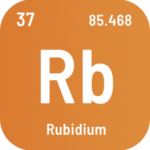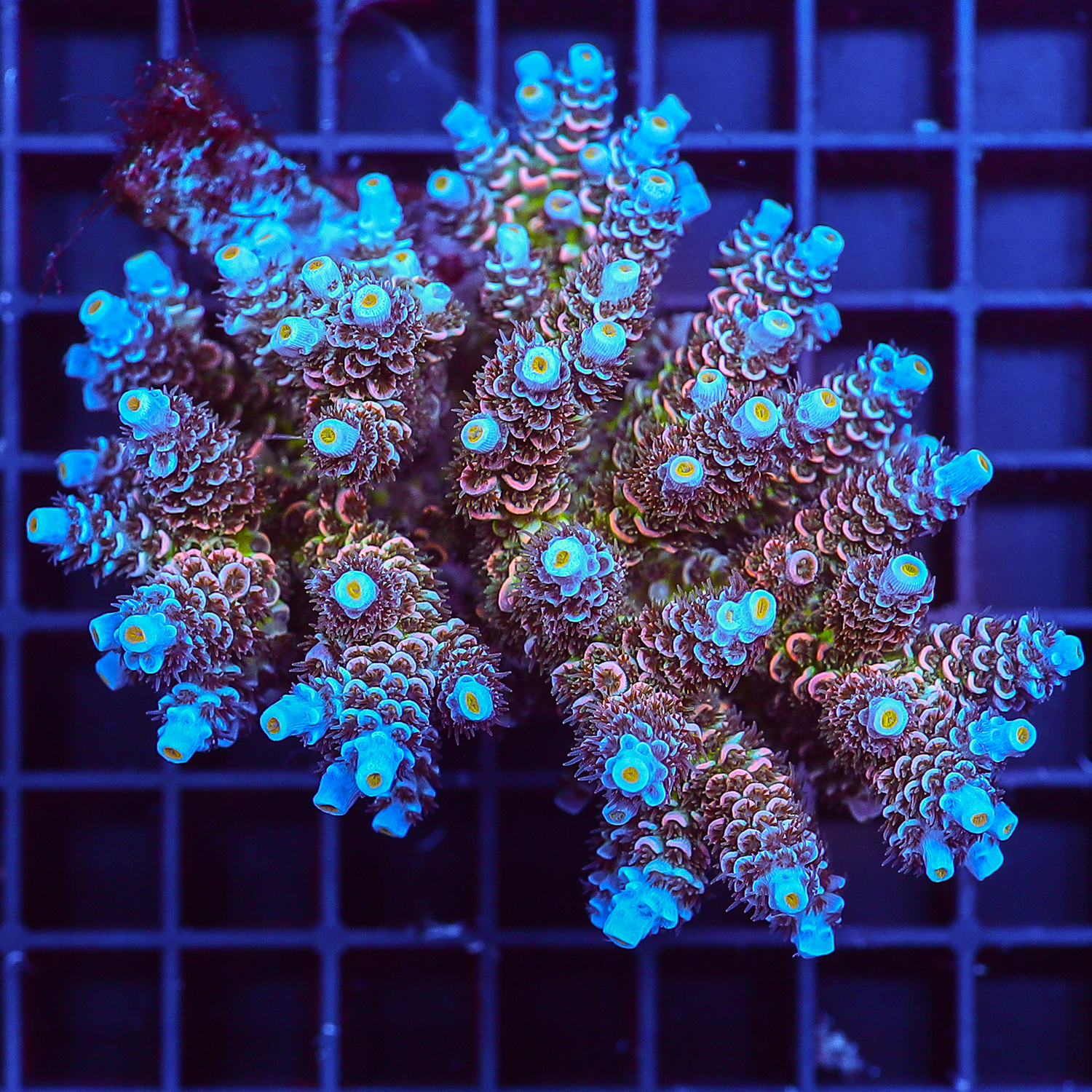Table of Contents
What is RUBID?
 Rubidium (Rb, lat. rubidium) is a chemical element from a group called the alkali metals*. It’s a shiny white metal that reacts strongly, even catching fire in the air, forming rubidium oxides. In nature, it’s often found in compounds in minerals like lepidolite, carnallite, and certain silicates.
Rubidium (Rb, lat. rubidium) is a chemical element from a group called the alkali metals*. It’s a shiny white metal that reacts strongly, even catching fire in the air, forming rubidium oxides. In nature, it’s often found in compounds in minerals like lepidolite, carnallite, and certain silicates.
In most compounds, rubidium has a +1 oxidation state. Examples of such compounds include rubidium chloride (RbCl), rubidium hydroxide (RbOH), rubidium carbonate (Rb2CO3), and rubidium oxide (Rb2O). It’s worth noting that when rubidium reacts with water, it forms a very strong base, rubidium hydroxide, along with the release of hydrogen gas.
2Rb + 2H2O ⇆ 2 RbOH + H2↑ (1)
The ideal level of rubidium, which is a trace element in a marine aquarium, is about 120 micrograms per liter.
Importance of rubidium in seawater
The impact of rubidium on the functioning of marine organisms is not fully understood, but the reserves of this element are regularly consumed by aquarium inhabitants. It’s known that rubidium salts show similarity to corresponding potassium salts (such as KCl and RbCl). The structural similarity between rubidium and potassium is likely why rubidium is absorbed into the coral skeleton, similar to another element, cesium (Cs). However, the exact impact of rubidium on corals is not fully understood.
Unlike metallic rubidium, its ions (Rb+) are safe for marine organisms. Rubidium ions in seawater interact with cells in the same way as potassium ions (K+), with the difference being that potassium is a fundamental element, while rubidium is not.
Scientific studies have also shown that rubidium exhibits biological activity, although there is no precise information indicating whether this directly applies to corals.
Observations from experienced aquarium enthusiasts suggest that rubidium enhances the brightness of corals and gives their skeletons greater hardness.

Problems associated with excess or deficiency of rubidium in seawater
So far, direct influence of rubidium on corals has not been proven. Nevertheless, it is considered essential for the optimal development of marine organisms. Low levels of rubidium lead to a decrease in the hardness of coral skeletons.
High concentrations of rubidium, on the other hand, are rare, and the effects of overdosing this element in seawater are not known.
How to protect your aquarium?
It’s important to regularly monitor the rubidium content and maintain it at the proper level. We recommend keeping rubidium levels between 100 – 140 micrograms per liter (μg/l), with the optimal value being 120 μg/l. The most accurate and reliable method for determining the elemental composition of seawater is through Inductively Coupled Plasma Optical Emission Spectrometry (ICP-OES). However, ICP-OES cannot be used to detect rubidium due to detector limitations. Instead, Inductively Coupled Plasma Mass Spectrometry (ICP-MS) is commonly used to measure rubidium in seawater.
Indicators of abnormal rubidium levels in a saltwater aquarium
They are not known.
Recommendations
To maintain the proper level of rubidium in the aquarium, you should regularly test it and ensure it stays at the correct level.
If the rubidium level is above 140 micrograms per liter (μg/l), it’s considered overdosing. The most common reasons for exceeding the recommended rubidium level include using excessive doses of administered fluids (check dosing parameters on dosing pumps). Find and eliminate the cause of the problem, and lower the value of this parameter in the water. Conduct up to 6 water changes. It’s recommended to replace about 15% of the aquarium water volume during each change until the recommended value of this parameter is reached. The replacement water must have the appropriate target salinity level. Use salts with the correct parameters and composition suitable for conducting the ICP test.
If the rubidium level is below 100 μg/l, we recommend using products containing this element to balance its level. To ensure a constant level of rubidium in the marine aquarium, we recommend systematically replenishing this element depending on the coral population in your aquarium.
* The term “alkali metals” refers to the elements found in Group 1 of the periodic table with strong metallic properties.
About author

Magdalena Metzler
Privately, I am a mother and a lover of nature and sport. My main interest is quantum chemistry, which hides a whole lot of unsolved mysteries and connections, which is extremely exciting from a scientific point of view.
In my scientific career, I have conducted international projects focused on innovative solutions for many branches of business, e.g. automotive, construction, and now, of course, marine aquaristics.
Working at Reef Factory gave me a passion for marine aquaristics, which I can develop every day, building a chemistry department and creating products that will help aquarists take care of tanks and ensure the highest safety of animals. One of the most exciting memories of working at Reef Factory is the commissioning of the ICP-OES spectrometer, which analyzes the elemental composition of seawater. The method of analysis in ICP is based on an analytical technique, which is a combination of my passion for quantum chemistry and marine aquaristics.
I hope you find my articles on ReefPedia interesting and helpful! Happy reading :))

